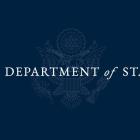 Twitter CEO Jack Dorsey’s many interviews in the past few months left the media wondering: where does he get his information?
Twitter CEO Jack Dorsey’s many interviews in the past few months left the media wondering: where does he get his information?
In an interview with podcaster Sam Harris, Dorsey dropped that he knew that journalists who leaned left were less likely to follow right-leaning journalists than right-leaning journalists were to follow left-leaning journalists. However, he did not mention where he got this information. Tech media site Gizmodo was told by Twitter that Dorsey was citing a study done by MIT and Graphika, but nowhere in the study were the political affiliations of journalists mentioned.
One of the researchers on the MIT study that Dorsey supposedly cited confirmed to Gizmodo that the study “had not examined the follow relationships between journalists of varying political appetites on Twitter. She could not recall any public academic study that had.”
Twitter later announced that Dorsey’s statement came from “an internal research effort done by our product engineering team to help them better understand the concept of ‘filter bubbles.’” Gizmodo speculated that either Dorsey misspoke in his interviews, or he is giving the most “enticing piece of data” from a study that Twitter refuses to make public.
[ads:im:1]
Given that Twitter makes many decisions based on journalists’ activity on the platform, it might be in the best interest of transparency to make such a study public. Even Gizmodo admitted, “If Twitter has relevant internal studies on bias patterns, it’s strange it would keep them hidden.”
Dorsey admitted in other interviews that Twitter “amplified the counter-narrative” whenever President Trump tweeted, relying on journalists to help the site achieve that counter-narrative. Many conservative journalists have found themselves censored or banned on Twitter, for “hate speech” or some other politically incorrect offense. Meanwhile, very few liberal journalists have complained of being censored by Twitter.
[ads:im:2]








